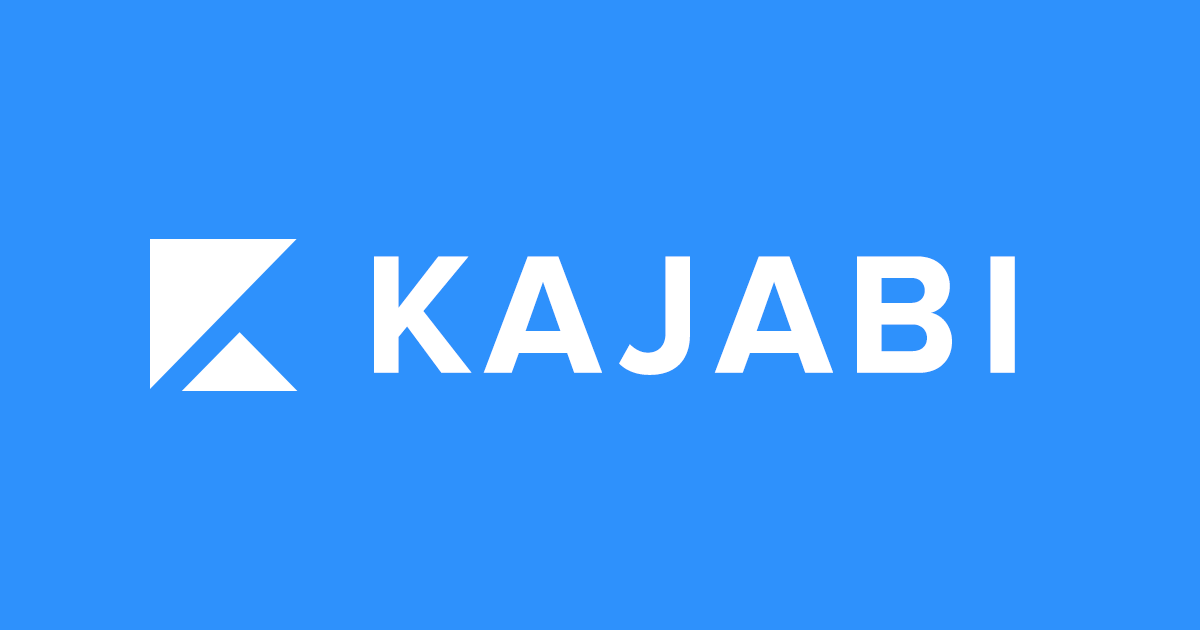So, you’ve got what it takes to make a name for yourself in educational entrepreneurship. But have you found the right platform that allows you to do so?
LMS or course management services allow you to create and share valuable content with students and customers. You can also make significant profits by selling these courses. There are many online LMS platforms available today, with some of the most impressive features you will find. But, with this influx, it can be pretty hard to choose which one suits you best.
I’ve had a fair share of struggles in choosing the perfect place to develop my entrepreneurial skills since I started selling courses. I jumped from platform to platform until I settled down with Kajabi once I became more confident. Although I might have found the right one for me, that doesn’t mean I can’t give sound advice to help you on your journey.
I will be giving you a brief overview of Kajabi and its alternative LMS services. We’ll take a close look at their distinct assets, the pros, the cons, what makes each other different or similar, and my opinion on whoever gets to use any of them!

For those of you who prefer a more visual experience, here is a video review from Legit Marketing Reviews’ YouTube channel. To get a comprehensive overview of Kajabi, you may still want to check out our article below.
Kajabi: A Brief Overview Kajabi Vs Lightspeed
Some of you may have recognized the name “Kajabi” in passing. It is an online course management platform that is popular and well-known. You can create and sell courses with almost any solution you want.
Course builder? It’s there. You need a reliable website builder. It’s there. A wide range of pre-made templates and themes? Certainly. You will find a variety of great sales and marketing tools. Yes! Kajabi has the right tool for you, no matter how complex your content management and sales needs.
Kajabi presenting itself as a one-stop service is enough to resonate with developing and established edupreneurs quite well. For this reason, it has received plenty of glowing reviews, though there are some valid criticisms here and there. Trustpilot gave Kajabi an exceptional 4.6 rating.
Kajabi’s Key Features
Kajabi is best known for its intuitive interface, wide range of customization and flexible editing capabilities. The course builder gives you all the tools you need to create a seamless educational experience for your students and you. Meanwhile, its website editor and free hosting allow you to have a fully personalized space where you could share what you have with anyone.
And it doesn’t stop here, because Kajabi has so much more to offer – its built-in suite of marketing tools, on one hand, works as impressively as most third-party providers combined. The inclusion of sales pipelines, for instance, is noteworthy, as other LMS platforms would have required you to connect with a standalone service that has the feature. Kajabi’s support and learning resources are reliable, as you would expect.
Kajabi: The pros and cons
Kajabi has a unique business model that isn’t often found on other LMS platforms. It’s all-in-one and offers many perks. Another benefit is that you don’t have to integrate with third party apps. Nearly all course management and marketing tools can be found within Kajabi. Another lies in revenue – Kajabi takes none of its shares, meaning you get to keep 100% of your profit from selling content.
While it’s worth noting the benefits of Kajabi’s business model, we shouldn’t fully ignore its downsides. The pricing alone is obvious as plans start at a whopping hundred dollars more than other services. The lack of a free plan doesn’t help either. Plus, many of its users don’t appreciate the lack of other essential course management tools within the platform, particularly certifications. Kajabi’s cons aren’t as severe as its pros. However, they are still worth considering. Kajabi Vs Lightspeed
Pricing plans start at: Kajabi Basic starting at $119/month
Is there a free plan? It does not offer a free plan, but you can try it for 14 days.
Kajabi is a great choice because you don’t need third-party integrations or platforms, it offers very affordable but very valuable plans, reliable user communities, and amazing customer support.
Kajabi is best for established professionals, newbies who have enough financial resources to pay Kajabi’s features and experienced edupreneurs.
Kajabi vs. Thinkific
Thinkific joins Kajabi and other top online LMS platforms. It allows you to concentrate on the task at hand. You can explore a variety of course-building tools, and use it to your advantage to produce content for your students. It’s known for its set of industry-level tools at a valuable price range, including a built-in certification tool, as well as its ability to integrate with thousands of third-party platforms through the Thinkific App Store.

> > Click Here to Check Out Kajabi < <
Thinkific has been my tool for creating and selling course content since before Kajabi. Though my needs may have outgrown what Thinkific had to offer, I could at least appreciate how it gave me enough flexibility to handle my courses during my tenure. Thinkific offers both a free and a premium plan, making it a viable Kajabi option for anyone with limited resources, especially financial.
The Similarities
Thinkific positions itself as an all-in-one place with intuitive course management tools for a better learning experience. It is similar to Kajabi and offers a course builder, customizable website editor and a range of business tools. You can also create a community for your students.
Both platforms shine when it comes to their course option offerings. No matter which you prefer, you have the chance to create stable online courses and/or membership pages. You’d even get to whip up assessments within them injected with a ton of variety as well! My subscribers have had no difficulty using the Thinkific interface, just like Kajabi.
The Differences
Thinkific offers its users a lineup of industry-level features at a reasonably valuable price range, despite borrowing the 0% transaction fee model from Kajabi. If you can compare the cost of its premium entry-level plan to the other, you’ll see the difference right away. The former does not offer a free plan, but it offers a functional, though limited, one.
Apart from the value pricing, other bonuses from Thinkific have to be its miles-more-accurate reporting and analytics as well as how it takes care of security measures within the service.
The Pros and Cons of Thinkific
Thinkific’s ease-of-use is something I love about it. The lack of depth in some features is another thing that I did not like. Although I like its built-in credential system, it is not my favorite feature. However, the lack of advanced business tools or theme options for websites is a major downer. However, all of this has been compensated for by a greater range of integrations.
Pricing plans start at: Thinkific Start as low as $74/month
Is there a free plan? Yes
Reasons to choose Thinkific: Valuable premium starter plan that allows for smooth career development, better analytics and reporting capabilities, super convenient user interface
Thinkific is more suitable for Newbie edupreneurs with limited skills, those who wish to sell courses without any complex marketing jargon
Kajabi vs. Teachable
Teachable is another popular service that shares the same premise as Thinkific in that it lets you build a completely integrated learning experience. At the same time, it takes care of the rest, i.e., the technical stuff. It was created by course creators for course creators. Therefore, it is natural that the main focus here is on course management.
Teachable has been lauded by beginners and bona fide creators alike. Beginners, particularly, stand by it due to the insanely cheap price range and extreme ease of use. Pros, meanwhile, come back to it because of its set of comprehensive course management tools, robust content analytics, and well-versed editing and customization capabilities. Teachable, like Thinkific, offers a fully functioning built-in certification tool, something Kajabi, unfortunately, does not have.
The Similarities
Teachable’s course-building feature offerings have what I can describe as the same caliber as Kajabi’s version. Both ways you would be happy with the ease with which you can create memberships, courses, and other products with seamless versatility. Although you could technically use these with either of the two, it is clear that Teachable has the advantage. Kajabi Vs Lightspeed
A key factor in the process of course creation is accessibility, so it’s a given that your students must be able to explore your content conveniently at any time and any place, even without the presence of a laptop/computer. Both Kajabi and Teachable address this with mobile apps that you can download on any handheld device, whether it’s powered by iOS or Android.
The Differences
Teachable may excel in its course creation and management capabilities, but not much so in other aspects. For example, its native marketing suite doesn’t carry the same weight as Kajabi. It’s evident that Kajabi gives its version the same attention and care as its course-building tools. Despite this, I gotta admire how well both platforms hold up in terms of reporting and analysis, though Teachable is a bit more detail-oriented.

> > Click Here to Check Out Kajabi < <
Teachable’s general interface looks simpler and less complicated. Even though you won’t have to code a lot, especially if it’s new to the process, Teachable gives you the freedom to go beyond its limitations with its Power Editor.
The Pros and Cons of Teachable
Teachable remains affordable and is a popular choice for both newbies as well as experienced pros. I strongly considered hopping on the train when I started my course business. The platform’s course management features, which are robust and simple to use, are also a strong point. It lacks in customization options and marketing tools. However, this is where the platform really shines.
Pricing plans begin with: Teachable Basic, as low as $29/month
Does it have a free plan? Yes
Reasons to choose Teachable: Extremely beginner-friendly user interface, extensive course management and analytics, simple interface that also allows for advanced-level adjustments
Teachable is better suited for absolute beginner entrepreneurs, established business professionals, and budget-conscious power users
Kajabi vs. ClickFunnels
ClickFunnels, a leading online service for entrepreneurs and businesses around the globe, is highly recommended. While this sounds promising, it operates differently from Kajabi and the other two LMS platforms we’ve already covered so far. It offers the usual course management, marketing and analytics tools but focuses heavily on the marketing aspect. Kajabi Vs Lightspeed
ClickFunnels can be described as a digital marketing platform. It allows users to spread their content/products across the internet and expects to make a profit. It has a wide variety of competitive business features that can be used for any purpose. It is versatile too. You can use it to promote both your courses and your physical products, if you have them. ClickFunnels is most well-known for its extensive library of sales funnel templates and split testing.
The Similarities
One factor that ClickFunnels and Kajabi have in common is the sales funnel feature. Both platforms offer a wide range of templates each strategically designed to encourage a bountiful flow of profit and optimized for any objective. While their respective versions do leave an impression, ClickFunnels has comparatively more to deliver, since sales pipelines are their main strategy, after all.
The general interface of ClickFunnels is as easy to navigate as Kajabi. Both services are top-notch when it comes marketing and sales. The checkout and payment tools in particular are as intuitive as you would expect. Plus, their customer service is equally top-notch!
The Differences
In digital marketing, making an effective landing page is as important as sending automated e-mails and crafting well-designed pipelines. Both ClickFunnels and Kajabi have page-building capabilities, but, while Kajabi allows you to build a fully-functioning website, ClickFunnels limits you to only a few page options, especially the landing page.
It is a sure way to increase your leads by hiring affiliates from your member base. Both services offer simple, yet powerful tools that will allow you to do this. With ClickFunnels, you get to use this function if you have either a physical or digital product. With Kajabi, meanwhile, you’re essentially only limited to your digital content, including your courses.
ClickFunnels: The Pros and Cons
I may not be that knowledgeable with deep marketing/sales jargon, but some of my colleagues who are can attest that ClickFunnels excels when it comes to delivering what it’s supposed to do. ClickFunnels guarantees entrepreneurs a higher conversion rate. The funnel-building and landing pages creation tools are also outstanding. It doesn’t excel in course-building, which is why it’s not as important for developers.

> > Click Here to Check Out Kajabi < <
Pricing plans start at: ClickFunnels Basic starting at $127/month
Is there a free plan? No, but it offers a 14-day free trial
Reasons to choose ClickFunnels: Strategic focus on digital marketing, the guarantee of a bigger sales turnout, flexible integration with other apps such as LMS platforms
ClickFunnels works best for Edupreneurs who have large budgets and individuals who wish to sell digital courses as well as physical products. Kajabi Vs Lightspeed
Kajabi vs. Kartra
Kartra is another popular option for market-savvy edupreneurs, as it specializes best in product selling, marketing campaigns, and other fail-proof schemes. This one is very interesting. It functions in a similar way to Kajabi, allowing you to create courses and memberships right away. However, it also works similarly to ClickFunnels with other aspects such as page building and marketing tools. You can sell physical and digital products.
Kartra is designed to increase engagement and leave subscribers asking for more. It has a large archive of full sales pipelines or campaigns, an easy scheduling system, additional widget options, and a unique scheduling system. You can also share your campaigns with fellow Kartra users, and even acquire a 360-degree view of where your leads are heading.
The Similarities
Kajabi and Kartra excel in offering an impressive range of business features that are industry-leading. With the sales pipelines, on one hand, you’d have the chance of success no matter where you look as both have plenty of optimized templates. You’d also have access to a wide range of marketing tools, including automations.
Nearly the same thing can be said about their page-building capabilities. While Kartra offers more options, they are still the most flexible and performant platform. Here’s my opinion: While there are many similarities between Kartra and Kajabi, ClickFunnels has some characteristics that are similar to each other.
The Differences
ClickFunnels may be losing to Kartra, which has a good number of course management tools. If you compare it to Kajabi’s version of Kartra, you might find that Kartra isn’t able to keep up with it as well. Despite this, Kartra is a great marketing and lead generation tool.
If you take a look at the widget options in its website builder, you may find stuff like countdowns, pop-ups, and anything that can easily convince potential customers. I guess that’s what happens when you run a platform that prioritizes one thing a bit more than the rest – there may be cons, but there will certainly always be pros. Kajabi Vs Lightspeed
Kartra’s Pros and Cons
Kartra’s robust offering of features, from page creation to business, is impressive. The set of plans are also very valuable as you can get the most out its core tools regardless of where you go. While Kartra may shine in its business tools, the same can’t be said with its course building. It can also be difficult to navigate, especially for beginners.
Pricing plans start at: Kartra Starter as low as $79/month
Does it offer a free plan? No, and it doesn’t offer a free trial either
Kartra is a top-quality business tool that doesn’t always need code, enhanced customer retention options and powerful video hosting.
Kartra is more suitable for Individuals who want to sell both digital and physical products, entrepreneurs with a keen eye for better marketing
Kajabi vs. Podia
A fan favorite and an underrated one, Podia is an LMS platform best known for its very affordable price range, extremely easy-to-explore user interface, and a list of valuable yet functional course and business features. It is similar to Kajabi but a lighter and more accessible version. Podia, along with the previously mentioned Teachable, has been seen by many course creators as a great starting point in their careers.
This is something I can attest to as Podia helped me to get into the field. Without Podia, I wouldn’t have learned about course-building and wouldn’t use Kajabi or other high-end services. Podia is a leader in communication. It allows users to easily message their customers without any hassle. Kajabi Vs Lightspeed
The Similarities
Podia is poised to be a kind of LMS that’s all-in-one in nature, much like Kajabi and, to some extent, Thinkific. While the other two are renowned for their premium-level advanced tools, Podia adjusts its version to be more budget-friendly and easy to use. You’ll find tons of functionality no matter where your eyes go.
With that in mind, Podia contains a fair share of dynamic and flexible functions across nearly all aspects of course management, from the course builder and player to the tasteful range of page themes to even sales funnels and other useful marketing tactics.
The Differences
Although the idea of an all-in-one platform that is budget-friendly may sound appealing, Podia, as it is designed, can be guessed now that there will always be limits. You’ll see that it is more affordable than Kajabi’s.
Podia may have the right platform to help beginners grow, but not enough to further develop them into experts – it’s for this reason that I had to switch to Thinkific once I felt it was the right time. Although Podia is not as sophisticated as Kajabi’s, it is still very functional and straightforward for the price. Not to mention its interface is such a breeze to explore, so much so that both beginners and pros like it!
The Pros and Cons of Podia
With Podia, you get to create as many courses as you like, plus you’ll be rewarded with unlimited storage – this comes in handy if you’re sort of a power user. All premium plans include transaction fees, and you don’t have to pay any transaction fees. Although Podia offers a free plan with no restrictions, there may be some limitations that could hinder your ability to use it. Kajabi Vs Lightspeed

> > Click Here to Check Out Kajabi < <
Pricing plans begin with: Podia Mover, as low as $33/month
Is there a free plan? Yes
Reasons to choose Podia: Flexible and convenient ease of use, creator-friendly course management features, great affiliate marketing and drip campaign tools
Podia is best suited for DIY entrepreneurs, absolute beginners, and those who are looking to test drive course management.
Kajabi vs. Mighty Networks
Mighty Networks started as a social media network. It has since grown to be a popular platform with a large following.
With a strong emphasis on forging connections and building communities, it allows you to utilize its course-building and marketing functions and share what you’ve made through its customizable social media feed that you can personalize. Your feed can be used to send updates, allow your members to comment, or even notify them that you are hosting a live stream. If I could describe Mighty Networks in a few words, it’d be “it works just like Facebook!”
The Similarities
Similar to Kajabi, Mighty has enough tools to let you create courses, memberships, and other kinds of content in-house. Both offer decent video hosting and live streaming, so if teaching via video is your thing, you can film them and upload them to either platform.
Both services also offer mobile apps which you or your students can download and interact with your content anytime and anywhere. A good thing about this is that they’re compatible not just with iOS devices but also with Android ones, so accessibility is highly guaranteed. Mighty recently added an affiliate program. However, because it is new, it may take years for it to become as robust as Kajabi. Kajabi Vs Lightspeed
The Differences
The major distinction between Mighty and Kajabi has to be what it specializes best – the former focuses more on community-building, and the other on the courses, coupled with a bunch of other things. As you can see, Mighty’s ability to build courses is not as good as it could be. They may be functional, at least, but not as advanced as Kajabi’s.
Kajabi‘s communication tools are good enough but not as dynamic as Mighty. I get that Kajabi is going all-in as a one-stop platform, but, compared to Mighty’s social feed, messaging, and comments capabilities, it can’t keep up as much as it could – I can even vouch for this as a Kajabi user myself!
The Pros and Cons of Mighty Networks
It’s obvious by now that Mighty Networks shines best in its community-building skills. The platform has been recognized as an ideal place for networking. It can be used for course content as well as for many other products. Speaking of course content, it’s also established that Mighty’s course-building is limited. Plus, to add salt to the wound, you can only get this feature if you’re subscribed to a higher business plan.
Pricing plans start with the Community Plan starting at $33/month
Does it offer a free plan? No, but it offers a 14-day free trial
Mighty Networks is a great choice: A highly-optimized social network for you and your friends, a more-functional mobile app, and minimal course-building and other marketing tools
Mighty Networks is more suitable for Edupreneurs who believe that communication is at the heart of course management, professionals looking to integrate it with other services
Conclusion Kajabi Vs Lightspeed
As we reach the end of this comprehensive list of reviews, I hope that this one helped you in any way in forming your final decision. Picking the most suitable LMS platform can be somewhat of a rough task but with enough credible resources and opinions from other users, it may be less cumbersome.
Kajabi is a service I recommend. If you are considering Kajabi as a service, it can be assumed that you have the professional skills to want to give it a try if you plan on becoming an edupreneur. I can also bet that you have enough finances to afford it. Kajabi’s products are well-priced and offer a lot of features. You may feel that they are worth the investment.
If you don’t feel confident with your current resources – whether it’s monetary funds or professional skills – and you feel that Kajabi may be too difficult for you, you might not be ready. If that’s the case, I’m always glad to let you try out any of my other suggestions.
If you’re into connecting with your members yet don’t mind about the barebones course tools, Mighty Networks may be your best bet. If you’re running short on budget, it’s either between Teachable or Podia. Better marketing and sales tools? You can choose between ClickFunnels and Katra. Are there affordable alternatives to Kajabi? Then look no further than maybe Thinkific or Podia.
No matter what you choose, what matters most is that you have a platform to mold you into a better edupreneur. Again, I am glad that I was able to help you select the right LMS for your course business career.

